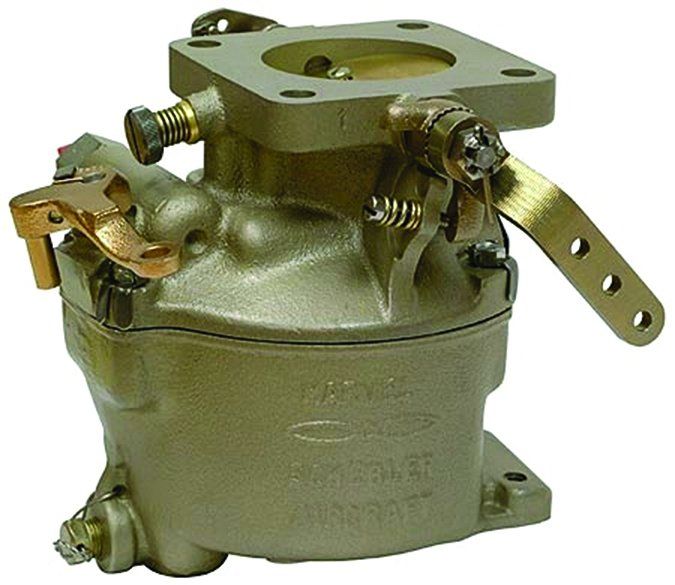Microbial Growth In Fuel Bowl
Continental O-300-A
Engine lost power, causing aircraft to make an emergency landing, resulting in substantial damage. Investigation revealed microbial growth in the carburetor’s fuel bowl at the drain plug area, causing blockage at the fuel channel and subsequent loss of power. This could be avoided by removing the carburetor (p/n MA3) drain plug at specified intervals and draining any moisture that may accumulate in that area.
Part total time: Unknown
Detached Accelerator Pump Tube
Lycoming O-360
Pilots made a precautionary landing after they were unable to retard the engine throttle below 2100 rpm. Inspection revealed the accelerator pump discharge tube detached from the boss and had become lodged between the throttle plate and the carburetor throat, inhibiting throttle movement. Scratches were observed in the carburetor’s throat consistent with the discrepancy. This carburetor (p/n 105217) was shipped with an overhauled engine directly from the manufacturer.
Part total time: Unknown
Detached Accelerator Pump Tube II
Lycoming O-320
After landing, the throttle was pulled back but engine rpm would not reduce below 1900 rpm. Inspection determined the carburetor accelerator pump discharge tube had come loose from its mount and lodged in the throttle valve plate, causing it to stick at 1900 rpm. The pump discharge tube had fallen down into the carburetor (p/n 105217) heat box below the carburetor and interfered with operation of the carburetor heat valve. The carburetor was replaced.
Part total time: 620.0 hours
Failed Mixture Control Boss
Lycoming O-360-A1A
Aircraft experienced a partial loss of power on departure at 1000 feet agl. After landing, engine roughness increased. During taxi in, max attainable rpm was 900. Problem determined to be fuel starvation: The boss in the bottom of the carburetor which receives the mixture shaft had rotated counter-clockwise in its housing, with the effect of pulling the mixture control knob.
Part total time: 15.0 hours
Fuel Leaking From Carburetor
Lycoming O-320-D3G
Engine dieseled after shutdown, and leaked fuel at the seam between the upper and lower halves of the carburetor. All the screws and safeties were in place, but there was a definite gap between the two mating surfaces. Aircraft also was running very rich.




